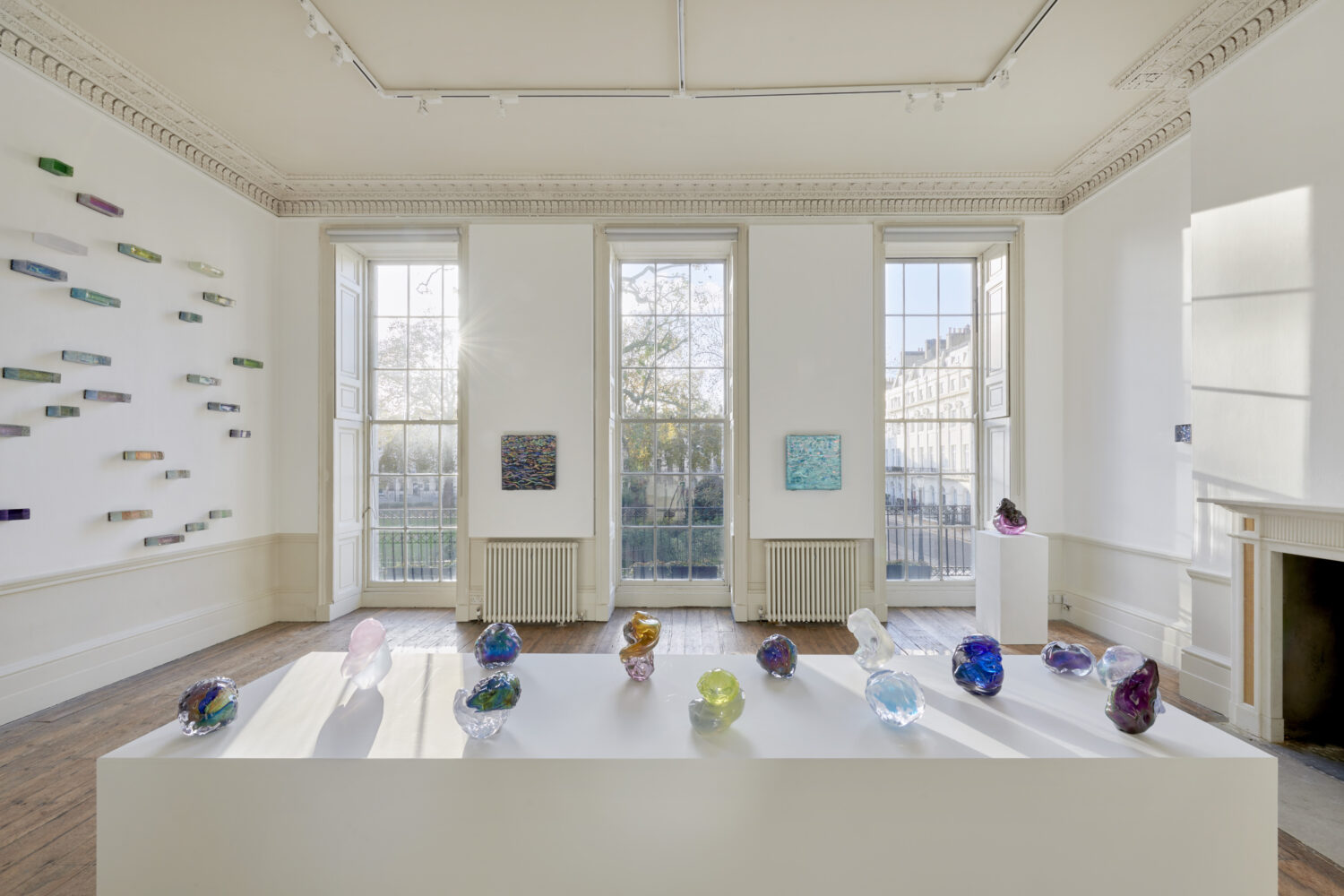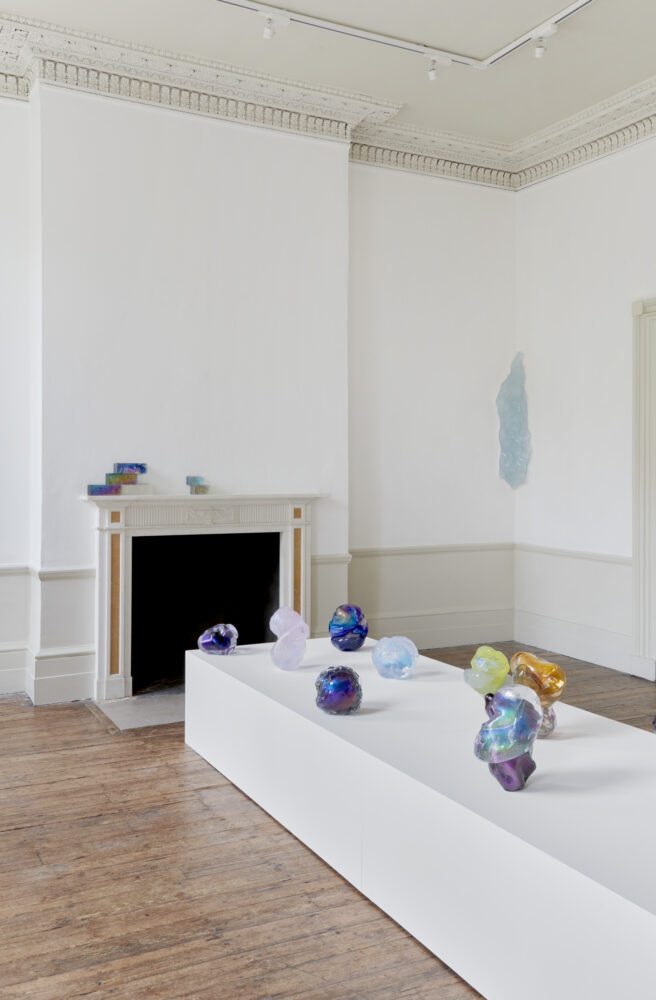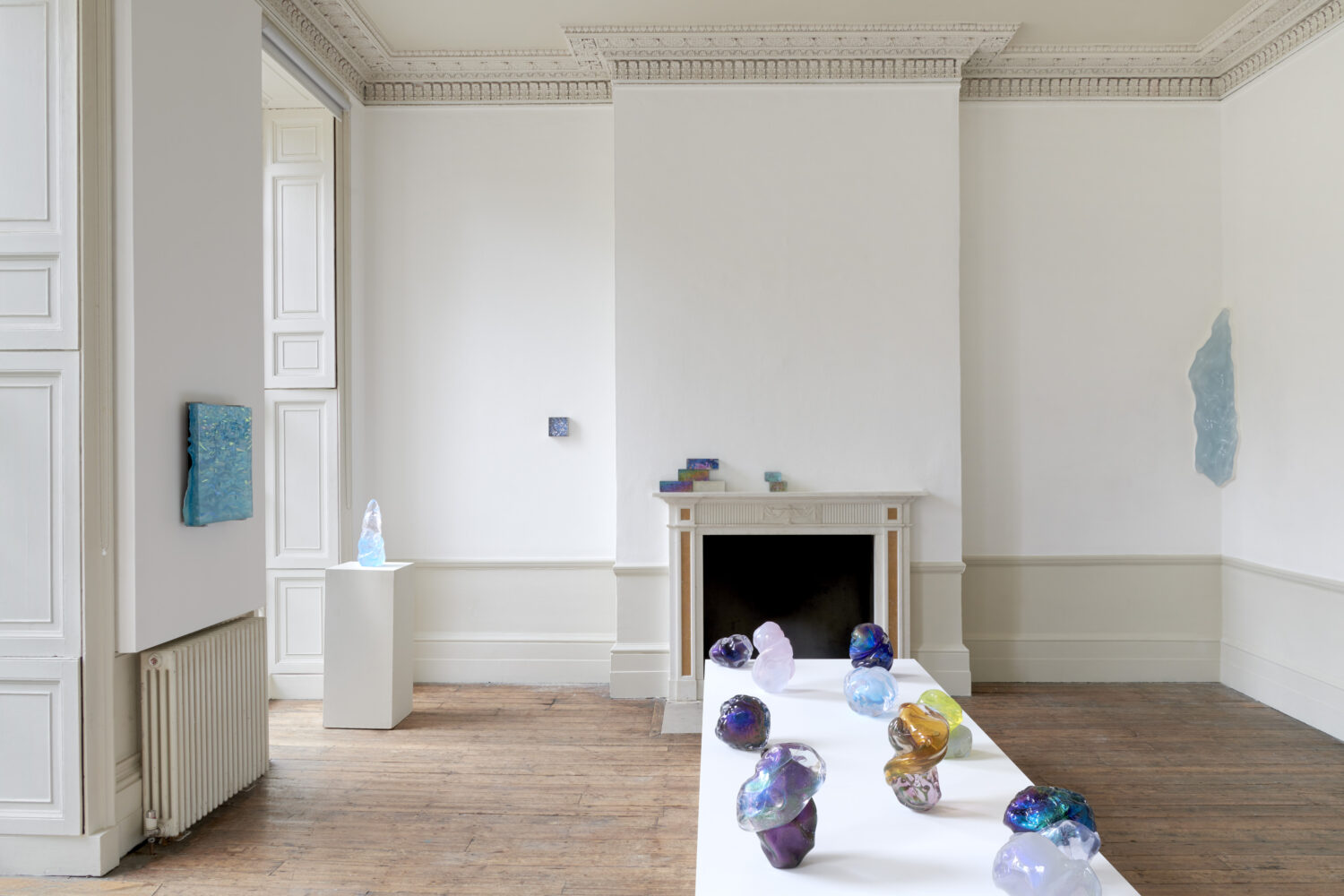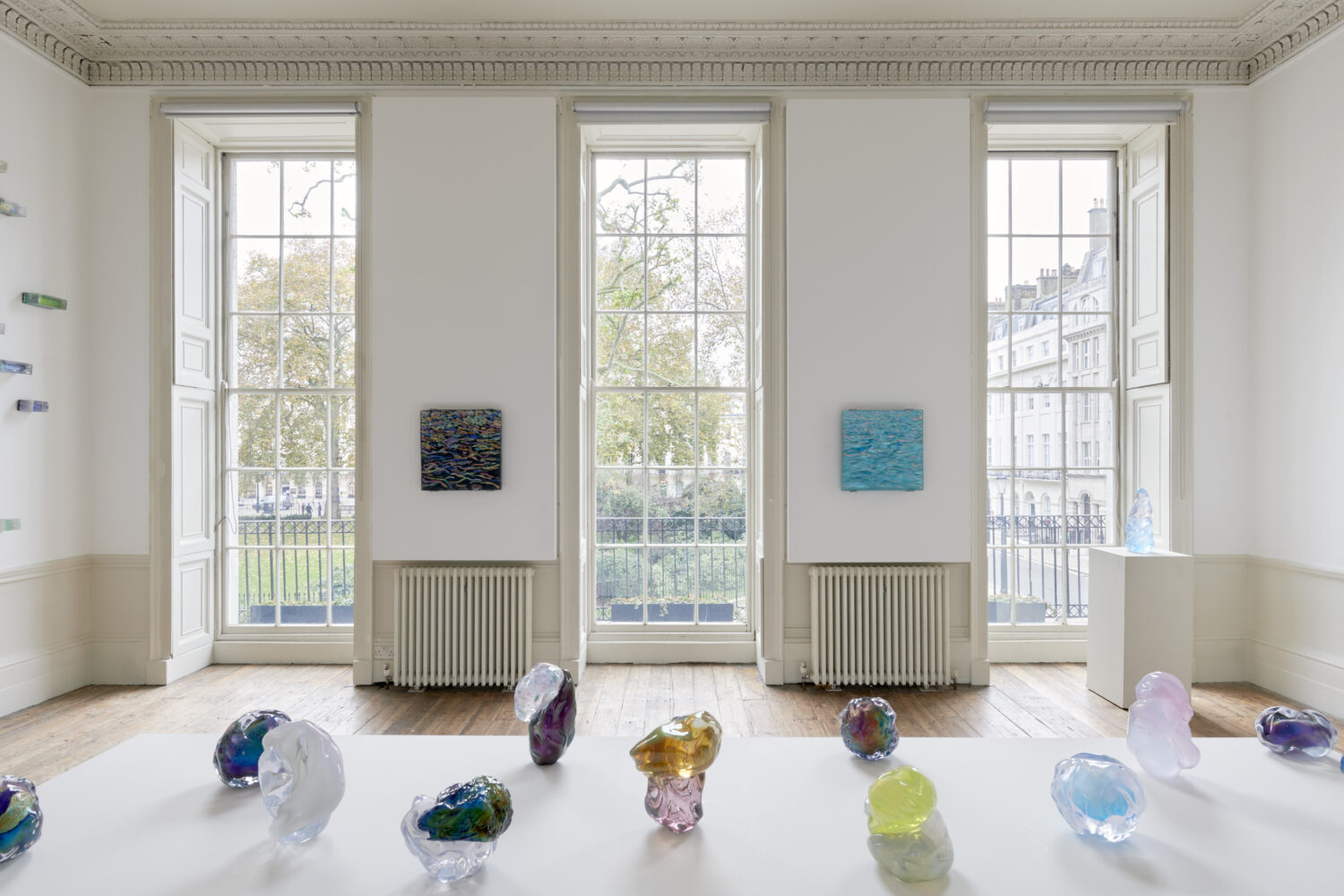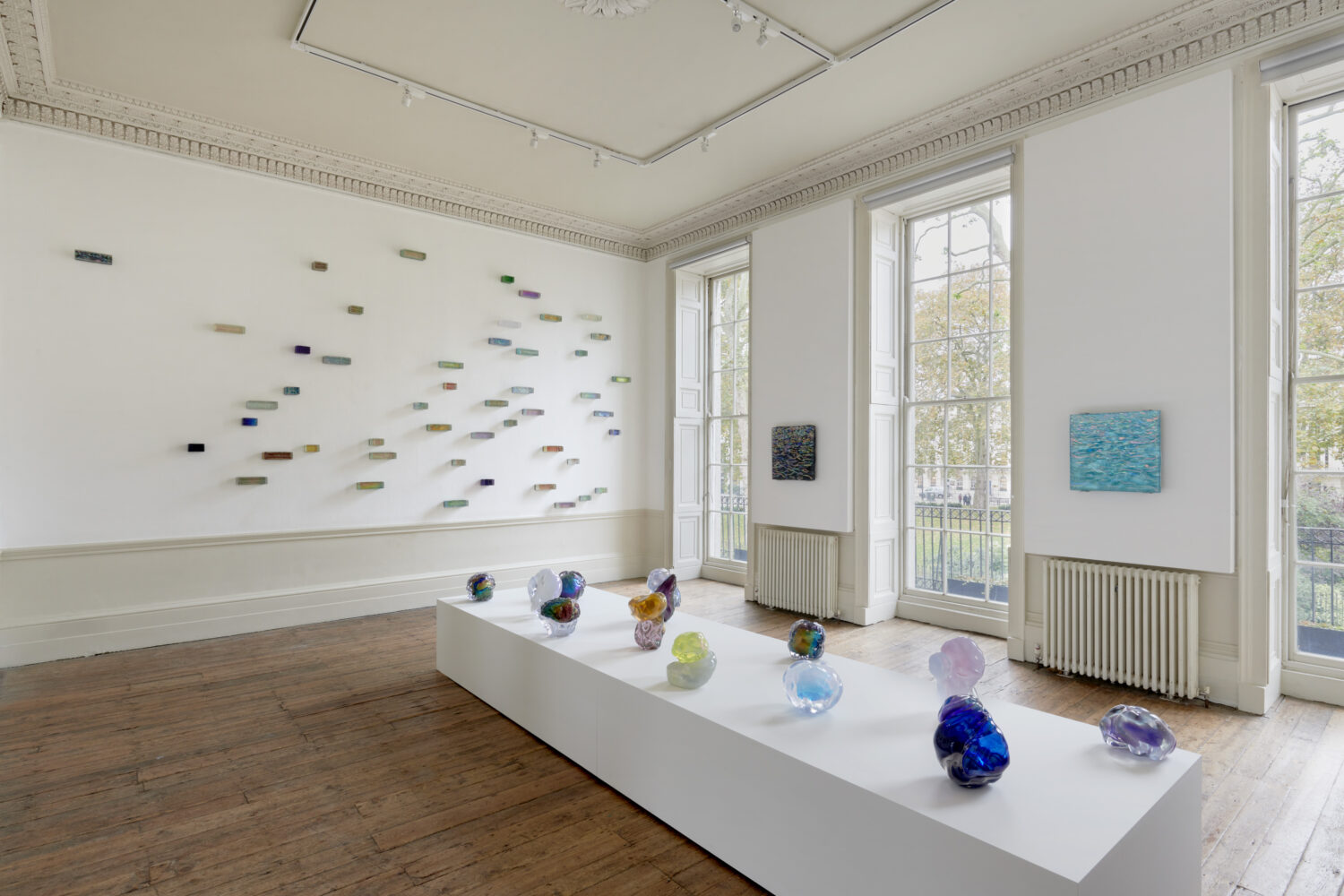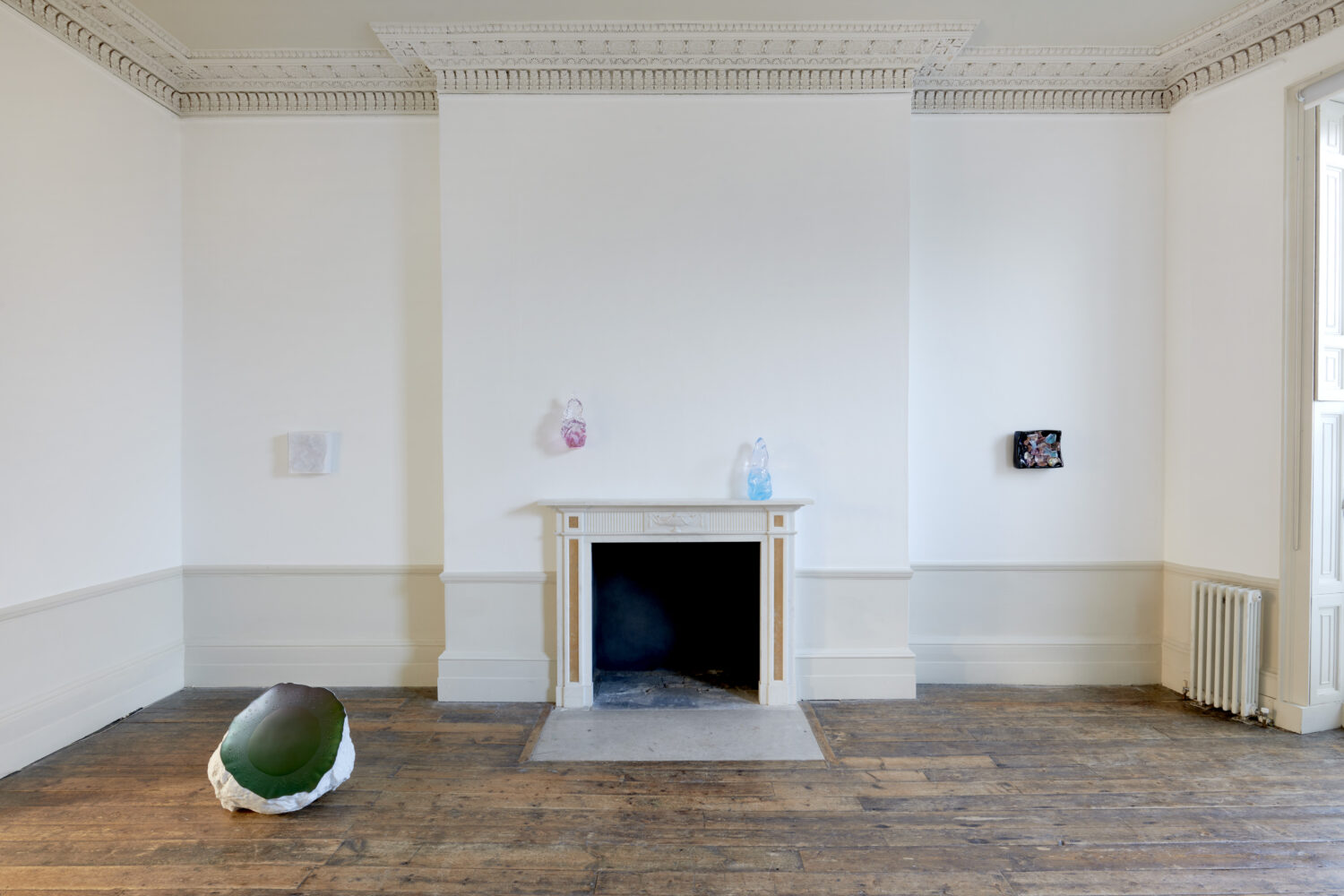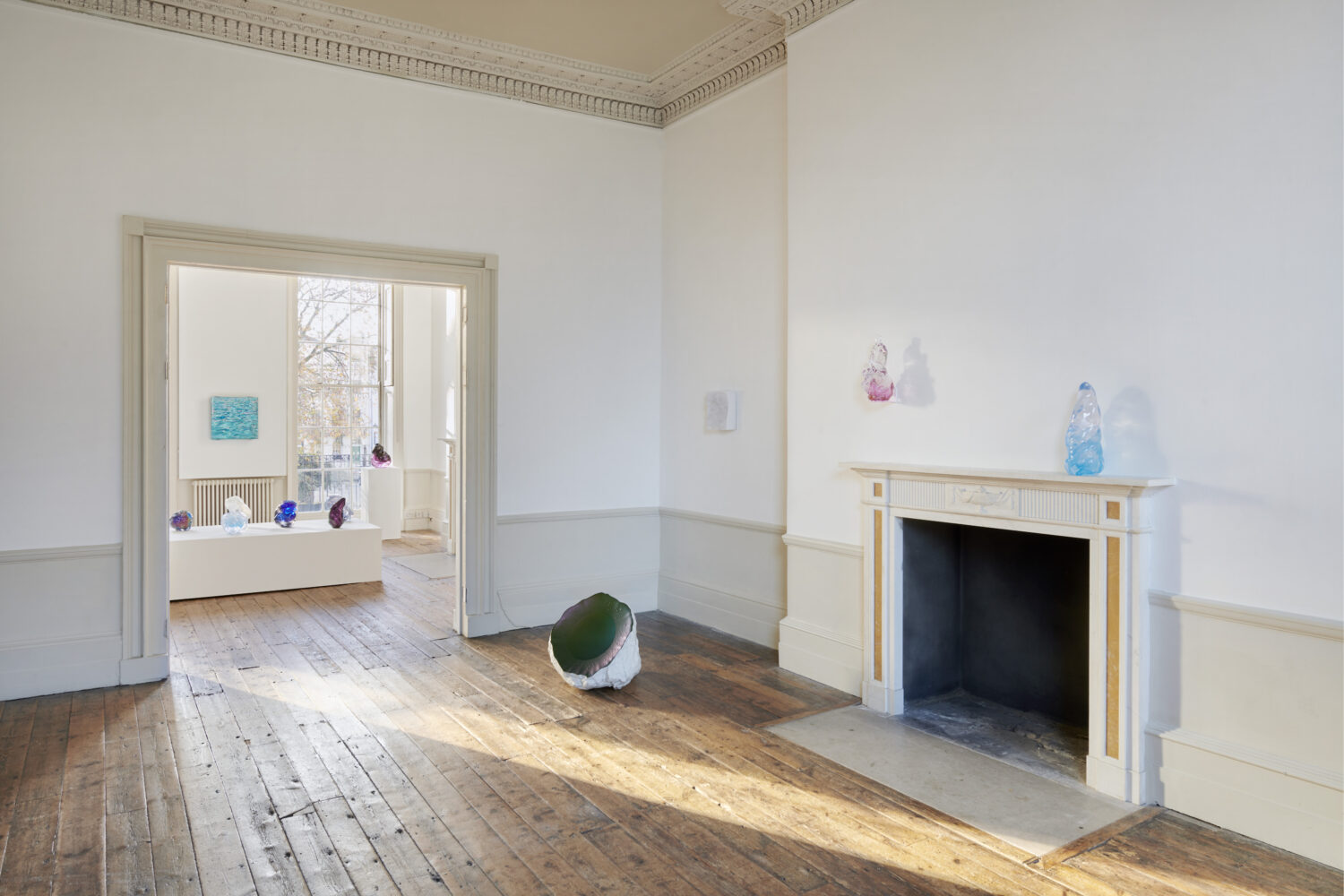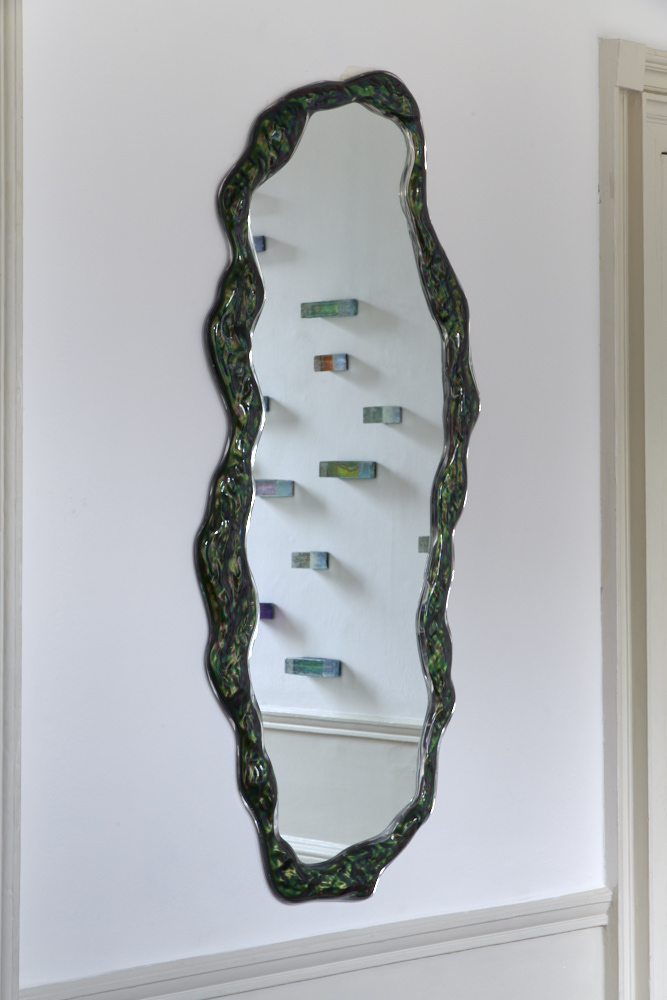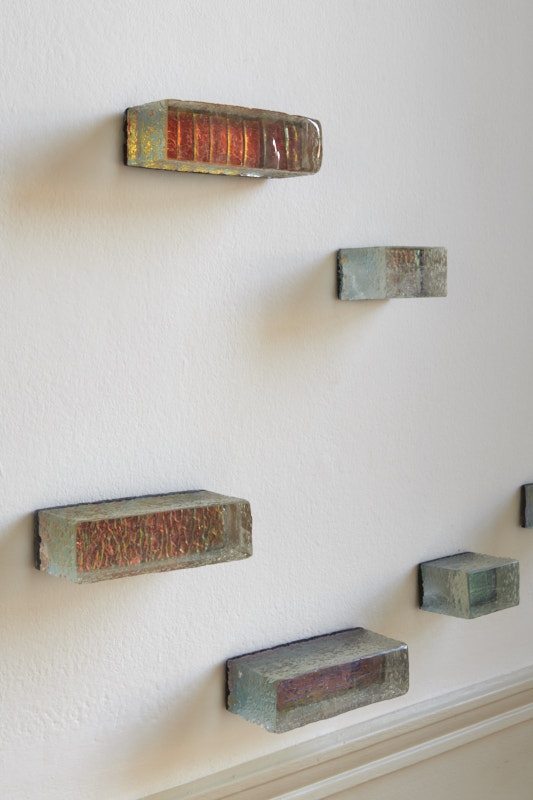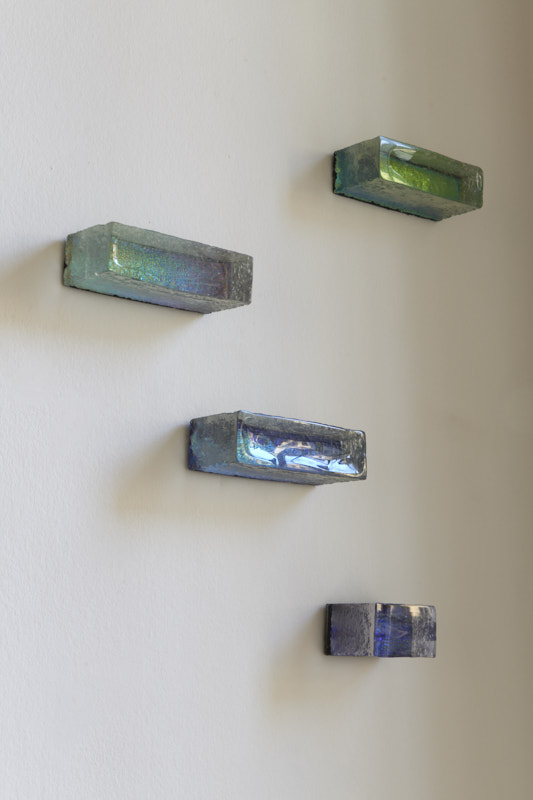Ora et Labora
The source of growth is Rupture
Ora et Labora – “pray and work” – is a Benedictine invocation that introduces us duly to the meditations and elaborations of Audi’s latest show. Prayer and action, dreamwork and contemplation, effort and grace – such are the guiding poles of duality and connectedness explored in the work. These verges are best epitomised by water and mineral – the two primary elements that the sculptures, with their fluid organic swivels and curves, appear in dialogue with: as if a tangible conjuration of the “primordial soup” from which all life may have been birthed several billion years ago. Closer to our times, however, the entire exhibition is a tribute to Audi’s grandmother who sadly passed away exactly a year ago. While no longer physically present in the artist’s life, the woman’s spirit infuses Audi’s oeuvre with fragrant, ever-tangible presence – from subtle, private references to direct quotations that the pieces invoke. A Buddhist monk figurine after an object in the grandmother’s house (Opening to the Waves, 2021); a foliage wall that separates the world of mundane existence and the heavenly realm (God is Hiding Behind the Foliage, 2021) based on a vision shortly before her passing – the works continue a dialogue so needed to help one heal the trauma of separation, to transmute the grief alchemically – the way glass and resin, Audi’s materials of choice, are themselves transformed through the contact with elements and forces in the sculpting and casting processes. At the entrance of the gallery are placed two glass stoups, receptacles for the holy water; the very moment of entering thus already carries specific connotations pertaining to the regenerative, transformative power of the religious ritual, as much as to the all too familiar sanitising measures of late. Across two rooms of the gallery, the “labora” shines through the crevices of the glossy sculptures on display. The works are crafted through creative evolution, an elaborate multi-step process that involves a host of hugely talented workshop collaborators who help bring Audi’s vision into shape, through a collective endeavour of trial and error, until a desired effect, shape, and scale are achieved. In Hugging Rocks, two twisted forms are joined in an embrace that leaves no empty space, no gaps and interstices, evoking the cosmic and energetic entanglement between all beings and things. Though inorganic, objects often exude a particular magnetism over our lives, binding us into connections that hold time, memory, space, and human kinships together. Saturated with being, they carry something of the spirit of their former owners – acting as hierophanies – a manifestation of the Sacred in profane space, as something breaking through from one plane of existence to another. Audi’s synthetic materials might be perceived as rather cold and detached in the loud assurance of their technological supremacy: surrounded by the iridescent digitally-conceived objects, we find ourselves in a sort of Ballard’s Crystal forest – uncanny, haunting. The voice of the beloved grandmother, however, suddenly brings out the warmer, joyous hues: it takes us back home. The show is less an ethereal cosmic expanse of Audi’s earlier works, and more of an intimate contemplation, while still bursting with the artist’s signature boundless energy – one that is constantly, relentlessly seeking. Audi continues her tireless (re)search, but now at a slower pace, a lamentation turned joy, an inward prayer externalised as a sea of new vivacious shapes. Tristan Hoare In the Benedictine tradition, the precept of “prayer and work” offers a rhythm for appropriate balancing and ordering of human life, and for the growing of Wisdom. The Wisdom of the grandmother, the wisdom of life, the wisdom of materials – all are gathered at their own pace in artistic process-as-contemplation. The search for new shapes and new colours parallels the search for new forms of being and experience: not just how can we see and sense a shape, but how can a shape perceive, contemplate, itself in the world? Audi’s pursuits to convey something beyond the tangible is not without historical precedent in her native Paris: in 1892, Salon de la Rose + Croix was launched with an exhibition that embraced Symbolist art and its quest to undermine conventional modes of representation in an effort to “access the divine directly.” Symbolists absorbed an amalgam of spiritual sources: Christian and Rosicrucian, Hindu and Buddhist, Kabbalistic and alchemical. Artists such as Jean Delville, Fernand Khnopff, and Félix Vallotton were seeking to underscore the spiritual dimension of art and provoke visionary states of mind in their viewers. In the wake of two catastrophic world wars in the twentieth century, mysticism lost its lustre, as a rite of secular objectivity and sober formalism took hold. The supernatural was all but expunged from art history and modernism’s story. Yet, the time is now ripe for artists like Audi to embrace their transcendental longings in a search of Re-growth and Enchantment fit for the epoch of Loss. — Aliya Say
